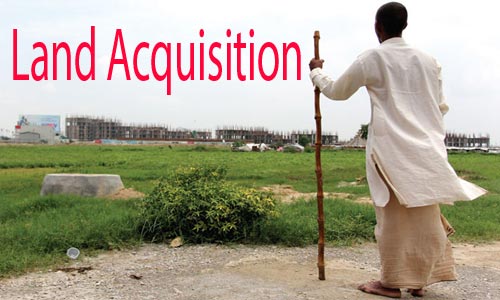The new Land Acquisition Act seeks to create a robust legal and institutional framework to facilitate the acquisition of land for a public purpose.
Even though the Act has received considerable flak from business houses because it makes the process of land acquisition highly complicated, it has also been praised in many quarters as it seeks to make the process of acquisition, which has hitherto lacked any kind of transparency, a lot more transparent and participative.
An important requirement which lies at the heart of this new acquisition system is the requirement of publication of a preliminary notification.
The Act exhaustively enumerates the details of such a preliminary notification.
It states, inter alia, that it is incumbent upon the concerned government to publish a notification within 12 months of the appraisal of the Social Impact Assessment Report, failing which the latter shall lapse.
Medium of publication:
The notification has to be published in the following:
A. in the Official Gazette of the government;
B. In two daily newspapers circulating in the locality of the concerned area ofwhich one
shall be in the regional language;
C. In the local language in the concerned Panchayat, Municipality or Municipal Corporation;
D. In the offices of the District Collector, the Sub-divisional Magistrate and the Tehsil;
E. It must be uploaded on the website of the concerned government;
F. In the affected areas in the prescribed manner.
Contents of notification:
The preliminary notification must, of necessity, include the following details:
- A detailed account of the nature of the public purpose for which the land is to be acquired;
- Cogent reasons for which affected families are to be displaced;
- A brief summary of the Social Impact Assessment Report and;
- Particulars of the administrator appointed for rehabilitation and resettlement in accordance with Section 43 of the Act.
Informing local authorities:
As soon as the notification is issued, the concerned Gram Sabha, Municipality or Autonomous Councils, as the case may be, must be informed about the contents of the notification. A special meeting should be called for this purpose. This provision further goes to show how this Act strives to make various local and regional stakeholders partners in development.
This information will not only allow local bodies to better understand which specific area of land will be acquired in the region, but will also allow them to acquire a more meaningful understanding of the reasons for such acquisition.
Objections to acquisition:
Any person who is interested in the land which the government intends to acquire may raise an objection within 60 days of the publication of a preliminary notification. The objection must pertain to the following issues:
A. The area and suitability of land proposed to be acquired;
B. The explanation offered of the public purpose for acquisition;
C. The findings of the Social Impact Assessment Report.
It is pertinent to note that such an objection has to be made by the concerned person in writing to the collector. Thereafter, the collector must either hear the objections raised by the objector personally or must authorize someone to do so on his behalf.
It is then incumbent on the Collector to prepare a comprehensive report containing his recommendations to deal with the objections. He must prepare another report containing details such as the total cost of acquisition, the details of the families that would be affected by the acquisition, etc.
Notably, the decision of the appropriate government with regard to the objections raised by all stakeholders shall be final.
Conducting survey and census:
After the issuance of preliminary notification, the rehabilitation and resettlement officer must conduct a survey and census of affected families in the prescribed manner in order to find out the following details:
- Information about the land and other immovable property which is to be acquired of each and every affected family;
- Details of those who would be losing their livelihood on account of the acquisition;
- List of public utilities and government buildings that would be affected by the resettlement of affected families;
- Details of the amenities or infrastructural facilities that would be affected by the resettlement of families;
E. Common property resources that are to be acquired.
On the basis of the aforementioned information, a rehabilitation and resettlement scheme must be prepared by the R and R officer to address the concerns of affected families. This scheme must be widely distributed and analyzed by all stakeholders.
No transaction on concerned land:
The Act unequivocally states that no person is allowed to enter into any transaction involving the land which is mentioned in the preliminary notification from the date of issuance of such notification.
Furthermore, the Act also explicitly prohibits any individual from creating any encumbrance on such land. However, the Collector can, if he deems it necessary to do so, create an exception to this rule in favour of any land owner in writing.
Conclusion:
The legal requirements for the publication of preliminary notification have been largely drawn from Section 4 of the 1894 Act and have been suitably modified to bring them in line with the participative and democratic system for land acquisition that this Act seeks to create.
The publication of the notification marks an important stage in the process of acquisition and imposes a duty on a large array of officers to determine the specific details of the acquisition.
After all the formalities that the notification entails are completed, the government must issue a declaration for acquisition and must, thereafter, acquire the land in the prescribed manner. Such a declaration must be issued within 12 months of the issuance of the preliminary notification. Otherwise, the notification shall be deemed to have been rescinded.











